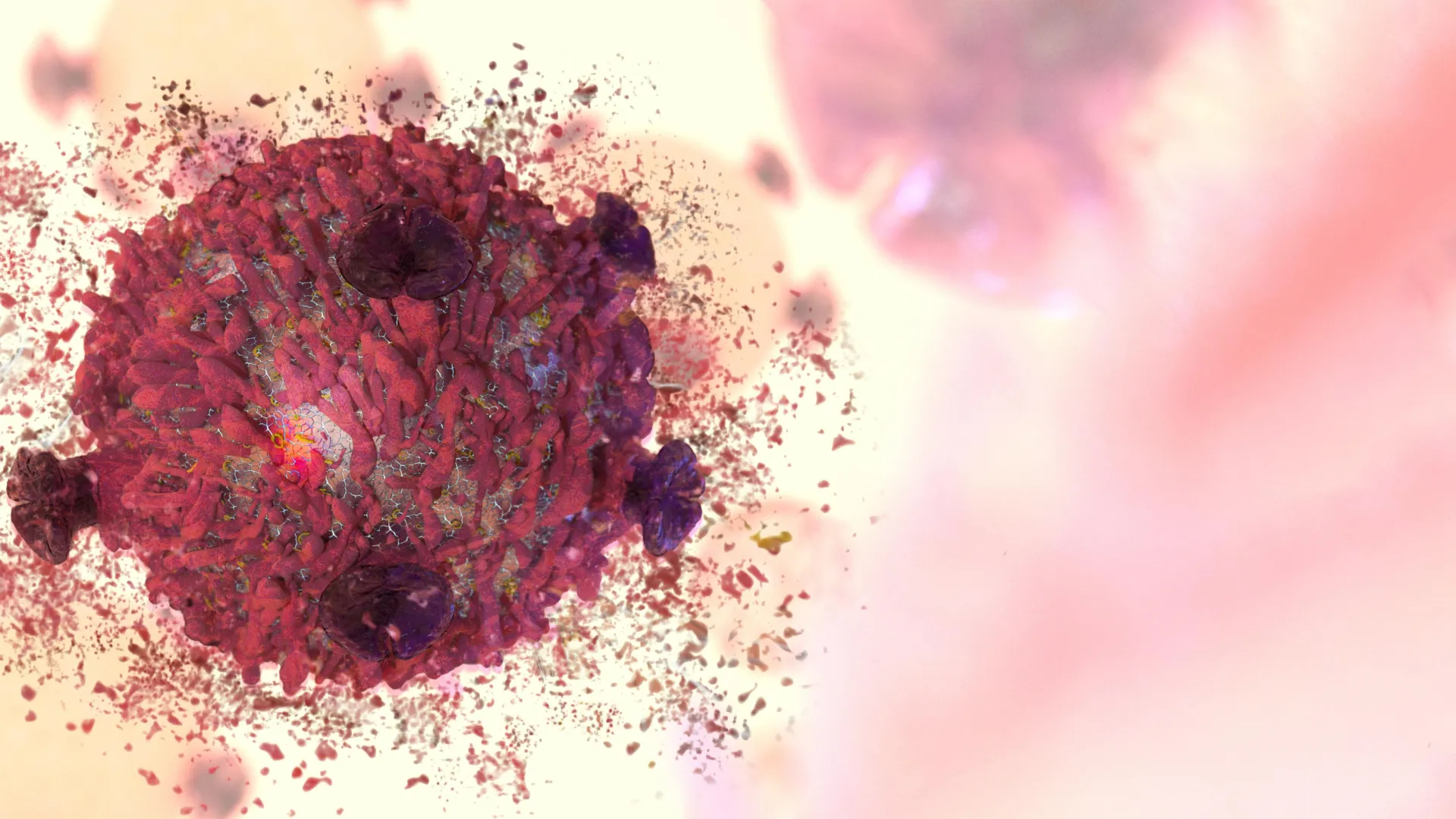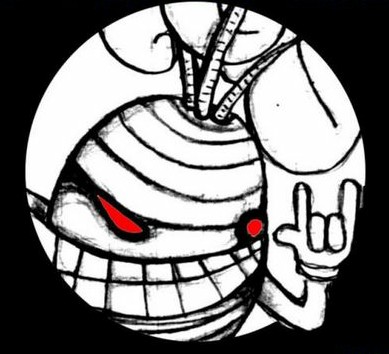Yet another <insert rare thing> kills cancer cells. Hey y’all, cancer cells are your own cells, just mutated to grow when they shouldn’t. This is not just one type of mutation. There are over 200 that they know of.
https://www.cancerresearchuk.org/about-cancer/what-is-cancer/how-cancer-starts/types-of-cancer
There is no universal identifier for all cancer cells. Therefore there is nothing that naturally kills them all.
The only general cure for cancer is to understand the immune system so well you can fine tune it at your discretion, or create a synthetic immune system to do the same. Everything else is just a one off. Still valuable, but not what articles like to claim.
Fiery?! Go up in flames? REALLY? I understand this is written for non scientists, .but this was written by the marketing department of Michael Bay’s production company.
Each time a cancer cel explodes, a tiny Nicholas Cage leaps heroically through the air just ahead of the blast
Oh, but I was hoping for a tiny Tom Cruise on a little motorcycle
Do healthy cells also do this?
I imagine this will be similar to chemotherapy.
As in, it technically affects all your cells, it just happens to affect cancer cells a lot more. In this case, because they try to absorb extra sugars in many cases.
Cancer cells often times lose their ability to perform oxidative phosphorylation. This means they can only rely on glycolysis as a sole source of ATP… This makes them EXCESSIVELY glucose hungry.
It’s called the warburg effect. I’d have to read up on it and brush up on biochem, but that’s the basic principle.
Essentially, cancer should soak up all the harmful sugar before it hits normal cells. This makes it even safer in theory than traditional chemo like methotrexate and such
Holy shit Thrive is so good, that I’ve understood most of your terms. Peak game
Another thrive enjoyer in the wild woohoo!
Yeah I’ve only just discovered it some months ago and it looks really promising, although it may never be finished, but I’m glad something like this exists
As a chemist that makes me wonder why they dont wrap the platinum in sugar complexes
Edit: Nevermind, they have: https://www.researchgate.net/publication/316670861_GLUT1-mediated_selective_tumor_targeting_with_fluorine_containing_platinumII_glycoconjugates
Yup, platinum chemo exists already too.
Still makes one feel really nauseated by the second time
because platinum sucks, and if you want to get real selective, you can tie together antibody and something like diphtheria toxin, but it’s not chemistry anymore, that’s firmly in biology ballpark
one of my guesses would be that platinum catalysis is expensive as usual, but recovery of the catalyst from living being would be much worse than equivalent lab seetup, so the cost would not justify.
I mean its still in use anyways, so might aswell choose the most direct and selective method if that is via glycocojugates.
What I want to know is why this compound acts this way on tumor cells and not healthy body cells. Im sure there is an explanation for that given the researchers are publishing its effectiveness, but I wish the article specified.
You’re assuming that the scientists have figured out why this happens, rather than just that it happens.
There’s plenty of science out there which consists of “oh, hey, look what I just noticed!“ And is just a lot of watching something happen without any explanation for it. That’s why scientists will continue to study this phenomenon until they figure it out. Probably so the company that is sponsoring them can profit from it in some way.
From the research paper (behind the paywall) it appears they only tested cancer cells, shown below, and on mouse models. It’s been awhile since I’ve studied this, so I don’t know if the proteins involved are specific to cancer cells or not. If not I’d assume it would kill all cells. With the mouse models I assume they injected directly into the tumor for targeted treatment, but I didn’t dive into it that deep.
Paper link: https://faseb.onlinelibrary.wiley.com/doi/full/10.1096/fj.202500412R?saml_referrer
2.2 Cell Culture
Human monocyte-like THP-1 leukemia cells (THP-1, THP-1Asc-KO, THP-1Gsdmd-KO, THP-1-Null, THP-1-defCasp1, and THP-1-defNLRP3) [4, 21] were provided by Professor Li Sun’s lab (Institute of Oceanology, Chinese Academy of Sciences, Qingdao, China), and human liver cancer Huh7.5 cells were maintained in our lab. THP-1 cells and Huh7.5 cells were cultured in RPMI 1640 medium with 10% FBS, 100 U/mL penicillin, and 100 μg/mL streptomycin at 37°C in a 5% CO2 humidified incubator. All experiments were carried out with the same batch of cell lines between passages 2 and 8.
2.15 Xenograft Tumor Mouse Model
BALB/C nu-nu male mice, 4 weeks old, were obtained from Beijing Vital River Laboratory Animal Technology Co. Ltd. (Beijing, China). A total of 3 × 106 Huh7.5 cells were subcutaneously injected into the right fore flank of each nude mouse. The daily drug treatment began when the tumor size reached ~100 mm3 and continued for a further 2 weeks as follows: EPS3.9 (30 and 60 mg kg−1 d−1, intraperitoneal injection) dissolved in assisted solvent (PBS); Control groups were given the same volume of PBS. Body weight and tumor volumes were measured every day with a balance or with a vernier caliper. The tumor volume was calculated with the formula: 1/2 × [length × (width)2]. After treatment for 2 weeks, mice were sacrificed by decapitation and tumor tissues were collected for further analysis.
Not my thought, but coming from my wife:
Maybe because tumor cells use up more energy and with that the sugar?Edit: just saw that it’s already mentioned by another commenter
It’s both amusing and a little disturbing that the term for killing the mice is “sacrifice.” I’m now imagining a bunch of researchers dancing around the mice while ritually decapitating them.
It’s discussed elsewhere here, but to answer directly - as I understand it, cancer cells can only use energy from sugars. Cancer cells are also extremely energy hungry, since they spend so much energy growing. When a cell absorbs these particular sugars, it self-destructs in spectacular fashion.
It sounds like they’re expecting cancer cells to absorb the vast majority of these sugars, leaving just a small amount for healthy cells. Which sounds to me like a kind of chemotherapy, but more effective and with weaker side effects.
(Not a biologist, most of this is over my head!)
I imagine a lot of what we know now was learned after we realized the benefits of things. I’d give it a few years/decades for researchers to spend time to analyze the data and figure it out.
In the meantime, fuck cancer and hell yes to this deep sea sugar stuff!
It’s possible they haven’t discovered why yet.
So far, I’ve found two things.- The pyroptosis pathway triggered is the typical one (lots of Caspase-1 proteins get assembled into a giant inflammosome complex and attack Gasdermin D, which then starts poking holes in the cell membrane).
- The EPS3.9 molecule has a high affinity for a five separate membrane lipids.
But without any formal biochemistry training, I am missing a lot of prerequisite knowledge.
Is that high affinity above normal? Does it need to bind all five to enter the cell, or just any of them? Are those lipids, or that combination of lipids, exclusive to tumor cells? I have no info on any of these questions.
It’s also entirely possible that it’s attacking healthy liver cells too, just at a reduced rate due to cancer cells being resource hogs.
article suggests a form of intense immune response, some sugars can trip these immune system tripwires rather easily. (look up meat allergy) the proper question is, how selective it can get and what are side effects
It’s probably using the metabolic pathways against itself since cancer metabolism and healthy cells metabolism are drastically different due to proliferation speeds.
Sugar cures cancer
That’s all I needed to hear! Thanks Science!
Oh boi, coke just became a health product again. /s
Off to the grocery store!
Now that’s sweet
It’s too bad that curing patients is not a sustainable business model. Even if this did work we would only ever see it developed if you had to take it twice a month for the rest of your life in order to survive.
Edit: sorry, I just noticed this is in Uplifting News. So, let’s be optimistic. Maybe global capitalism will collapse and governments will start trying to take care of people.
You’re thinking too small. If we cure cancer, everyone can start smoking again. Asbestos is back in business. There are hundreds of industries that would take off immediately. W
The company that would truly suffer is the one that makes those little stickers in California.
Even if so… If this is as effective and safe as it seems then it will get leaked to the public or reversed engineered and then made public. The original paper’s abstract says “this active exopolysaccharide is ubiquitous among the genus Spongiibacter” which means it’s accessible.
The repression of such a boon could not last long. History has proven the human spirit is nothing if not irrepressible. There are plenty of people capable and motivated enough to run what little information we already have all the way to a consistent home manufacturing solution. Its publication and distribution is another game entirely but I’d bet on the public there as well.
Take a look at the Four Thieves Vinegar Collective for some tangible encouragement. Knowledge is power. Together we can be powerful enough to create what we need to survive. Government buy-in encouraged but optional.
People don’t magically stop getting sick just because you can cure them.
I’m always a little skeptical of these claims.
But hey, if we figure out a way to do this in people safely, then cool.
I was wading in here to post exactly that XKCD.
We discover hundreds of new compounds that kill cancer cells every year. Perhaps we should only be posting in uplifting news when new drugs are found effective.
This one seems a bit better than most—in that they’ve tested it on mice and it seems to work—but there’s still a big gap between mice and humans. Plus we don’t entirely understand the mechanism behind it yet.
A mouse model still is really not a stage to post news articles. Only 1 in ~100+ drugs that make it past mouse models eventually get approved. And those are replicated findings. As far as I can tell this headline is an un replicated study.
Journalists need clickbait “cancer cure” hopium. But I don’t think it’s very useful. As a chronically ill person myself I’m sick of people sending me those articles about my illness because they think a cure’s on the horizon when well, it’s really unlikely. Which means every time they see me and I’m not magically cured I have to sit through another “what about that miracle drug” convo. I still hope, but I don’t like the misleading hopium journalism seems to love.
completely off topic, but you want to know how effective advertising is? every time i read a sciencific article about something exploding in a dramatic way, like this one, my mind goes 🎵 plop plop fizz fizz 🎵. how many years has it been since that damn ad?
The one my mind goes to is this xkcd https://xkcd.com/1217/














